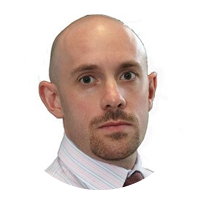Stuart Sneddon
Ricardo
- Conference: Air Quality Conference
- Presentation: The application of Real World Vehicle Emissions Measurements to provide unparalleled insight into the mobile sources of urban air pollution
- Presentation Time: Day2 11:55


Dr Stuart Sneddon is a Technical Director of Air Quality at Ricardo Energy & Environment. He has over 20 years of experience within the environmental sector focussing primarily on air quality management, climate change and human health/ environmental risk assessments. He is an experienced Project Manager and Director, having led and coordinated a number of high-profile programmes in the UK and internationally, including the Scottish Air Quality Database and Website Project. Stuart is currently coordinating the development and implementation of a number of Ricardo’s Air Quality innovation projects. This includes the application of real-world emissions and the RapidAir dispersion modelling system to provide unrivalled insight into urban air quality and the ability to identify effective solutions.
Air quality is a major concern in European cities. Emissions from road traffic remain the principal threat to air quality in towns and cities across the UK and authorities are investing considerable resources in designing and implementing schemes (e.g. Clean Air Zones) which aim to reduce emissions and facilitate compliance with the air quality objectives. Air quality models developed to support the evaluation and selection of appropriate schemes routinely utilise guidebook emission factors (e.g. COPERT or HBEFA) to estimate emissions from the vehicle fleet. However, recent studies have indicated that many road vehicles generate substantially higher emissions than estimated in the guidebook emission factors and as a consequence, models may overestimate the impact of specific schemes, or underestimate the contribution from different components of the vehicle fleet. The presentation will consider Ricardo’s work to combine its research on real world vehicle emission remote sensing, traffic datasets and the unique capabilities of its RapidAir® dispersion modelling system to support authorities in the development of targeted and effective traffic schemes and mitigation scenarios.